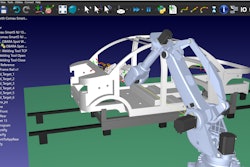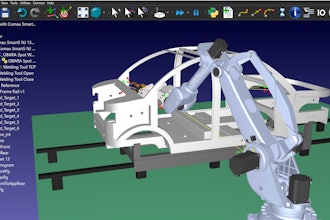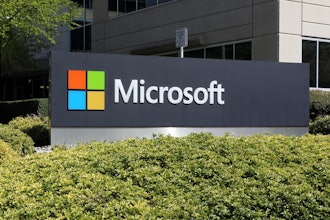The strategy of managing manufacturing operations via point solutions is becoming increasingly ineffective as manufacturers face increased global competition and market pressures.
Traditionally, operational visibility in the realm of the shop floor has been enabled by Manufacturing Execution Systems (MES) supporting real-time process control scenarios and quality initiatives, whereas Enterprise Resource Planning (ERP) has been in use in the manufacturing operations, primarily supporting order execution, optimized scheduling and inventory management, quality checks, traceability and planning.
Each system on its own can provide a host of benefits, but manufacturers wanting to drive improved performance and competitive advantage are integrating MES and ERP to leverage the best of both worlds to have a complete digital thread throughout their entire organization and supply chain.
Key Benefits Of ERP And MES
ERP is no longer just about automating business processes or about cutting costs but rather about enabling businesses to grow and take advantage of new opportunities while mitigating risks. In today’s fast-moving manufacturing environment companies need next-generation ERP systems that can support collaboration, adapt to unique and dynamic environments, improve customer responsiveness, meet regulatory requirements and drive growth as well as keep a lid on costs.
MES delivers consistent, accurate and visible machine and production execution metrics that operations management can use to identify underperforming and high-performance processes and machines and then optimize asset utilization accordingly to eliminate bottlenecks. Performance efficiencies gained from MES can open up the possibility of increasing output and profitability, all from existing production assets. Capital expenditures can be deferred or rerouted to fuel investments in other areas to expand and grow the business.
Additionally, creating an automated digital thread improves responsiveness, lowers costs and improves the accuracy of production and quality performance information that can be used for deep insight into strengthening the operations and execution of production processes.
Uniting ERP And MES
One of the common challenges manufacturers face is the need to effectively connect planning, scheduling and quality data from its ERP system with the shop floor realities of MES into one centralized system. Overcoming this challenge can result in real-time access to machine and quality data that can be imported into an ERP system to better plan schedules and resources to meet customer demand and optimize service levels.
Doing so can help avoid the following situations:
No visibility to the shop floor.
Having poor insight into shop floor operations can slow decision-making, resulting in delays and unhappy customers. Understanding the situation on the shop floor in real-time helps manufactures to better plan to meet customer demand.
Getting two systems to “talk” to each other.
Manufacturers typically purchase ERP and MES systems from different vendors, which often leads to manually entering data from one system to another in order for both to communicate with each other or bulk imports of data that don’t match each system’s unique structures.
Rising inventory costs.
Real-time alerts and notifications regarding issues on the shop floor can raise a red flag, enabling immediate action to resolve problems. But without real-time shop floor data access, manufacturers run the risk of higher amounts of scrap and inventory negatively impacting the bottom line.
The integration of ERP and MES enables manufacturers to achieve a holistic view of business processes and core production and better utilize shop floor data that's crucial to improving operational efficiency and maximizing profitable manufacturing outcomes. This delivers more accurate data from the shop floor to the top floor, enabling manufacturers to adjust schedules and processes based on production capacity and machine availability.
Real-time reconciliation of information between ERP and MES ensures data integrity for supporting accurate scheduling, planning, monitoring, resourcing and costing. This integration spans structural data, job scheduling and production reporting, effectively pulling data into a seamless bi-directional information environment.
Users will benefit significantly from improvements in promise-to-order, labor and equipment utilization, and business intelligence as a result of tighter integration and real-time feedback between ERP and MES. In addition, a real-time digitized closed-loop between the business systems and the plant floor provides an accurate up-to-the-minute view of machine and production availability for improving operational effectiveness and responsiveness.
Where To Begin When Selecting ERP And MES Systems
Before purchasing and evaluating MES and ERP systems, manufactures need to assess from the start what will need to be accomplished on the shop floor with each system since they will be implemented on separate timelines.
Typically, a plant manager acquires the MES system and manages it while the IT and finance department purchase the ERP platform. It's important that a company’s CFO and CIO come together to understand the opportunity around the ERP/MES integration. The integration of ERP and MES starts with a cultural change within a manufacturer.
Manufacturers embracing Big Data, Mobile and IoT technologies, new data and process integration capabilities must be added to organizations’ operations. Competition might arise anywhere, often from unfamiliar players; disruptive technologies might also change the game radically in a short time.
Manufacturers need to strive to improve flow/use of data throughout the organization – from shop floor to bottom floor – now, lest they become overwhelmed and outflanked.
MES ROI can be seen through product delivery, quality management and customer satisfaction. Integrated with ERP, this leads to better planning which improves a company’s overall operations and enables the executive team to lead more effectively and better understand profit/loss to make the right decisions to grow the organization.
The integration of ERP and MES offers manufacturers real advantage – and shouldn’t be overlooked as organizations seek out strategies for growth.






















